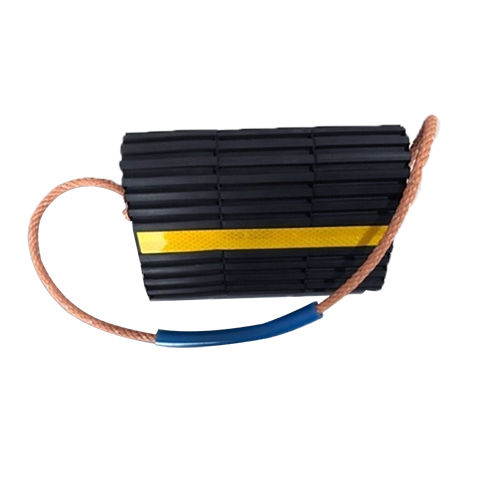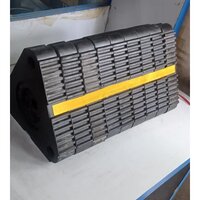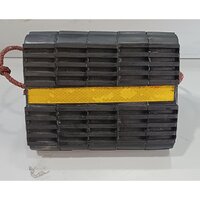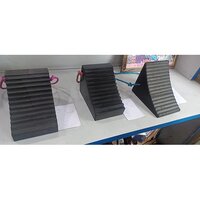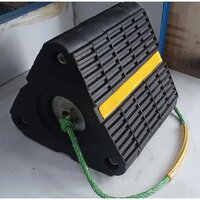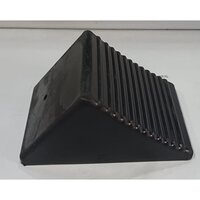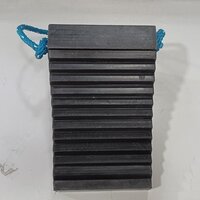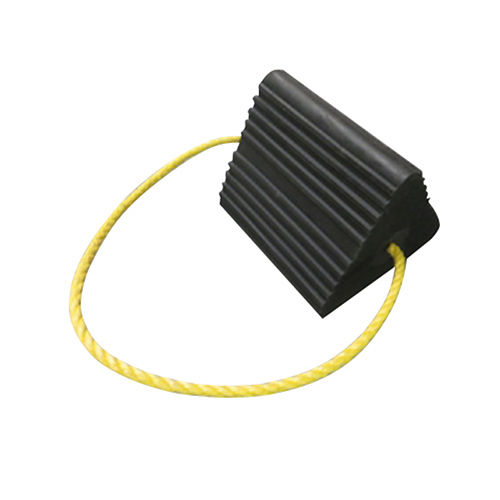Welcome to Our Company
Wheel Chock
750 INR/Piece
Product Details:
- Material Rubber
- Natural Rubber Yes
- Weight 5.50 Kilograms (kg)
- Color Black
- Feature Durable, Good Quality, High Strength, Non Breakable
- Product Type Wheel Chock
- Size 7 x 7 x10 Inch
- Click to View more
X
Wheel Chock Price And Quantity
- 750 INR/Piece
- 1 Piece
Wheel Chock Product Specifications
- Industrial
- Wheel Chock
- 7 x 7 x10 Inch
- Durable, Good Quality, High Strength, Non Breakable
- Rubber
- Yes
- 5.50 Kilograms (kg)
- Black
Wheel Chock Trade Information
- 2-3 Piece Per Day
- 3-6 Days
Product Description
A wheel chock, also known as a wheel stop or wheel block, is a device used to prevent the movement of a vehicles wheels. It is typically made of a durable material like rubber, plastic, or metal, and is shaped like a wedge or block.
The primary purpose of a wheel chock is to provide stability and prevent unintended vehicle movement, especially when the vehicle is parked on an incline or during loading and unloading processes. By placing the wheel chocks against the wheels, they create resistance and friction, effectively immobilizing the vehicle.
Here are some key features and uses of wheel chocks:
1. Construction and Maintenance: Wheel chocks are commonly used in construction sites, where they help prevent vehicles and heavy equipment from rolling away on uneven or sloped surfaces. They ensure safety during loading and unloading of materials or when vehicles need to remain stationary.
2. Vehicle Maintenance: When performing maintenance or repairs on a vehicle, wheel chocks are used to secure the wheels, ensuring the vehicle does not move unintentionally. They provide stability and prevent accidents caused by the vehicle rolling or shifting unexpectedly.
3. Trailer Stabilization: Wheel chocks are also essential for trailers, such as utility trailers, camper trailers, and recreational vehicles (RVs). Placing chocks behind the wheels helps keep the trailer in place, preventing it from rolling while parked or when hitched to a vehicle.
4. Aircraft Ground Support: In aviation, wheel chocks are used to immobilize aircraft on the ground. They are placed against the aircrafts wheels to prevent any movement during loading, unloading, or maintenance procedures.
When selecting wheel chocks, its important to consider the size and weight of the vehicle or equipment being stabilized. The chocks should be sturdy enough to withstand the force and weight exerted by the wheels. It is also crucial to follow proper placement techniques, ensuring the chocks are wedged firmly against the wheel to provide maximum stability.
| Size | 10x 10x10'' |
| Country of Origin | Made in India |
| Material | Rubber |
| Brand | Sai Rubber |
| Color | Black |
| Shape | L Shaped |
| Weight | 10Kg |
FAQs of Wheel Chock:
Q: What is the Wheel Chock made of?
A: The Wheel Chock is made of natural rubber, ensuring durability and strength.Q: What is the weight of the Wheel Chock?
A: The Wheel Chock weighs 5.50 kilograms, making it perfect for use in various applications.Q: Is the Wheel Chock durable?
A: Yes, the Wheel Chock is designed to be durable, ensuring that it can withstand the toughest weather conditions.Q: Is the Wheel Chock breakable?
A: No, the Wheel Chock is non-breakable, ensuring that it can maintain its strength and reliability over time.Q: What is the color of the Wheel Chock?
A: The Wheel Chock comes in black color, adding an aesthetic appeal to the chock and making it an eye-catching addition to any vehicle.Tell us about your requirement

Price:
Quantity
Select Unit
- 50
- 100
- 200
- 250
- 500
- 1000+
Additional detail
Mobile number
Email

